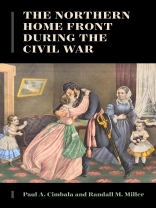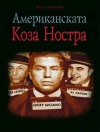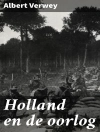With a new preface and updated historiographical essay.
Based on recent scholarship and deep research in primary sources, especially the letters and diaries of “ordinary people, ” The Northern Home Front during the Civil War is the first full narrative history and analysis of the northern home front in almost a quarter-century. It examines the mobilization, recruitment, management, politics, costs, and experience of war from the perspective of the home front, with special attention to the ways the war affected the ideas, identities, interests, and issues shaping people’s lives, and vice versa. The book looks closely at people’s responses to war’s demands, whether in supporting the Union cause or opposing it, and it measures the ways the war transformed society and economy or simply reconfirmed ideas and reinforced practices already underway. As The Northern Home Front during the Civil War reveals, issues and concerns of emancipation, conscription, civil liberties, economic policies and practices, religion, party politics, war management, popular culture, and work were all part of what Lincoln rightly termed “a People’s Contest” and as much as the armies in the field determined the outcome of the nation’s ordeal by fire. As The Northern Home Front during the Civil War shows, understanding the experience of the women and men on the home front is essential to realizing Walt Whitman’s oft-quoted call to get “the real war” into the books.
Table of Content
Preface to the Fordham University Press Edition | ix
Introduction | xv
Chapter One : Communities on the Verge of War | 1
Chapter Two : The Secession Crisis | 13
Chapter Three : Fort Sumter and the Patriotic Response | 23
Chapter Four : Rallying to the Colors | 33
Chapter Five : Soldiers and Civilians as Neighbors | 43
Chapter Six : Incomplete Families | 53
Chapter Seven : Pastimes with Purpose | 67
Chapter Eight : Knowing War | 79
Chapter Nine : Paying for the War | 91
Chapter Ten : Producing for the War | 105
Chapter Eleven : Politics and Dissent | 119
Chapter Twelve : Emancipation, Conscription, and Dissent | 133
Chapter Thirteen : Th e Transition from War to Peace | 147
Notes | 161
Bibliographic Essay | 215
Index | 231
A photo essay follows p. 118.
About the author
Randall M. Miller is Professor Emeritus of History at Saint Joseph’s University, Philadelphia. He is the author or editor of numerous books on a variety of subjects, including the Civil War, Reconstruction, slavery, religion, and politics. Among his Civil War–related books are, as co-editor, Religion and the American Civil War; The Birth of the Grand Old Party: The Republicans’ First Generation; and Women and the American Civil War: North–South Counterpoints.












